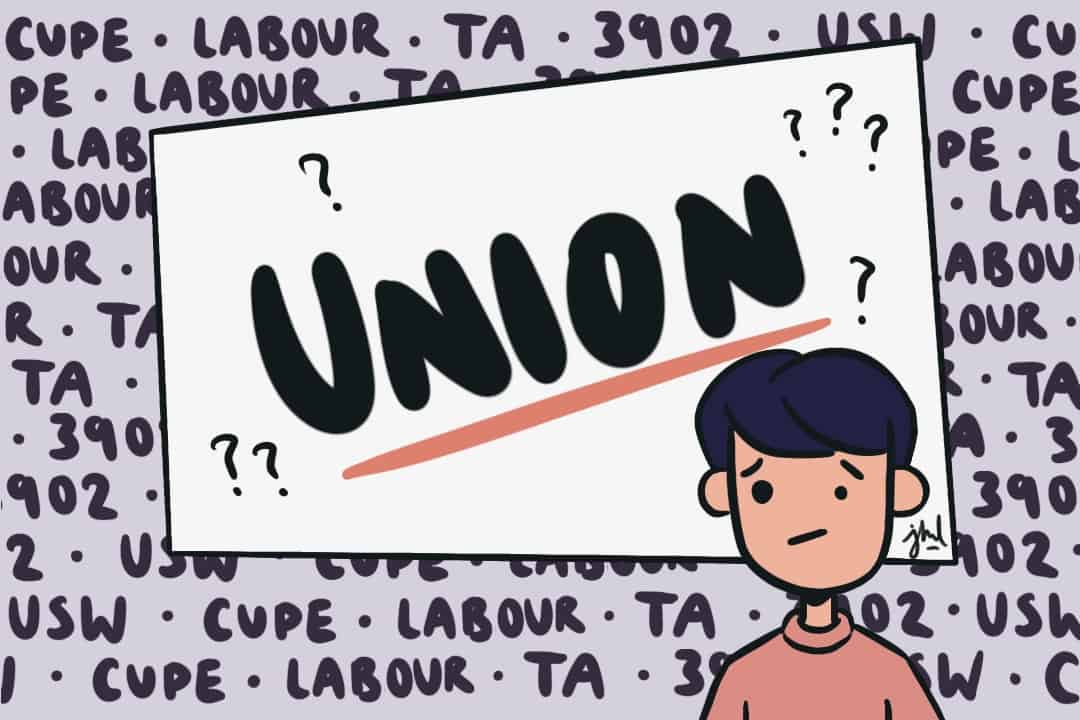Labour is indispensable for the continued operation of the University of Toronto. From carpenters and locksmiths to post-doctoral fellows and library workers, over 20,000 employees contribute their labour to the university’s functioning. These workers are represented by trade unions.
A union is an association of workers that engages with employers in discussions of payment and working conditions, usually to reach a contract or a ‘collective agreement.’ When employees in a workplace establish and legally register such an organization, they are ‘unionized,’ and would then have the right to collectively bargain, or negotiate, the terms of their work with their employer. The idea is that there is strength in numbers; collectively, employees may be less vulnerable to an imbalanced power dynamic between an individual worker and an employer.
What do trade unions do?
The goal of a union is to represent, protect, and advance the interests of its members, mainly through achieving a favourable contract that includes factors such as pay, benefits, working conditions, and more. For this reason, a union may have smaller branches or ‘locals’ that represent workers in a specific workplace or area, and directly take part in collective bargaining for that workplace.
Unions also engage in industrial actions like walk-outs, strikes, or other forms of work stoppage in order to secure their demands. One instance of a strike at U of T happened in 2015, when a number of union members, mostly teaching assistants (TAs), rejected a tentative collective agreement.
There are many unions in Canada, such as the Canadian Union of Public Employees (CUPE), United Steelworkers (USW), and the Canadian Actors’ Equity Association. Unions can connect and cooperate on a national and international level to advocate for workers’ interests.
U of T’s trade unions
Within a union’s local, there may also be different bargaining units — more specific groupings of workers that bargain together for a collective agreement that applies to them. For example, while USW Local 1998 represents administrative and technical workers at U of T, it has a separate bargaining unit for casual employees, Victoria University employees, residence dons, and staff-appointed employees.
According to U of T, there are currently 10 unions representing workers at the university, with 25 bargaining units in total. However, some recent collective agreements such as that of CUPE unit 6 have not been updated on the university website listing staff bargaining units.
CUPE is the largest union at U of T, spanning 10 bargaining units and five locals (CUPE 3902, 3261, 1230, 2484, 3907), and representing more than 9,500 U of T workers in total. It represents a variety of employees from daycare workers, library workers, and hospitality workers to post-doctoral fellows.
CUPE 3902 is the largest local, and represents contract academic workers like sessional lecturers, music instructors, TAs, invigilators, and so on. The local’s roots can be traced back to 1973, when a group of seven TAs formed a union with the help of volunteers and the Graduate Students’ Union. That group became the first legally recognized trade union for TAs in North America, and later went on to become the Canadian Union of Educational Workers, expanding to several other locals in other universities before merging with CUPE to become CUPE 3902.
In terms of membership numbers, USW 1998 is second only to CUPE at U of T, and represents more than 8,000 university employees. Its members include lifeguards, residence dons, Standardized Patients, and more. Notably, last year, USW organized a collective bargaining campaign accompanied by the video “Precarity U” and the song “Bills to Pay,” which resulted in two paid sick days for its casual members.
Although the University of Toronto Faculty Association (UTFA) is not a trade union, and university faculties and librarians are not unionized, it deserves a mention since the association performs similar representative and collective bargaining functions. These bargaining powers include the setting of wages, workload, benefit and pension terms, and some career policies.


